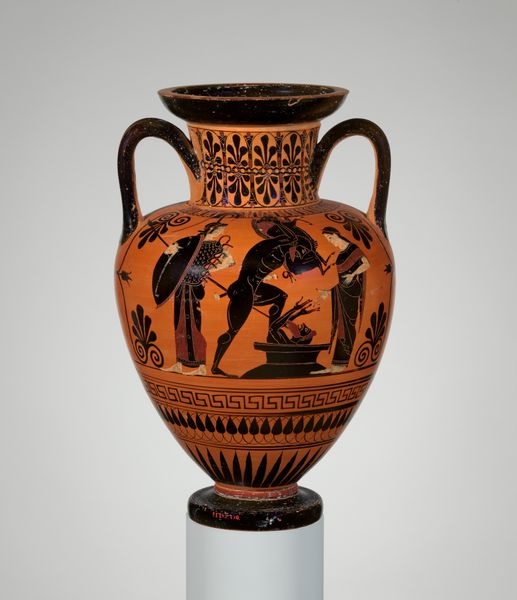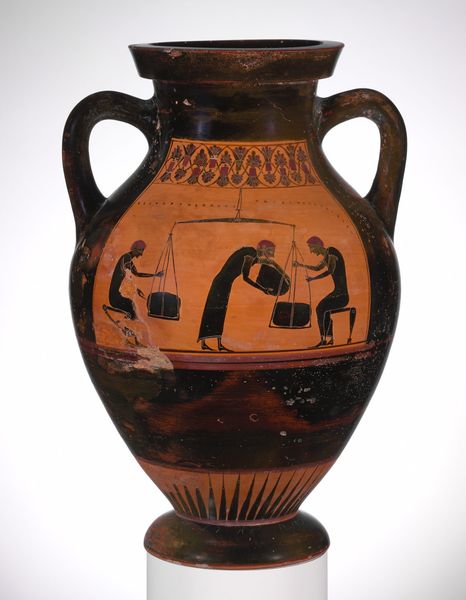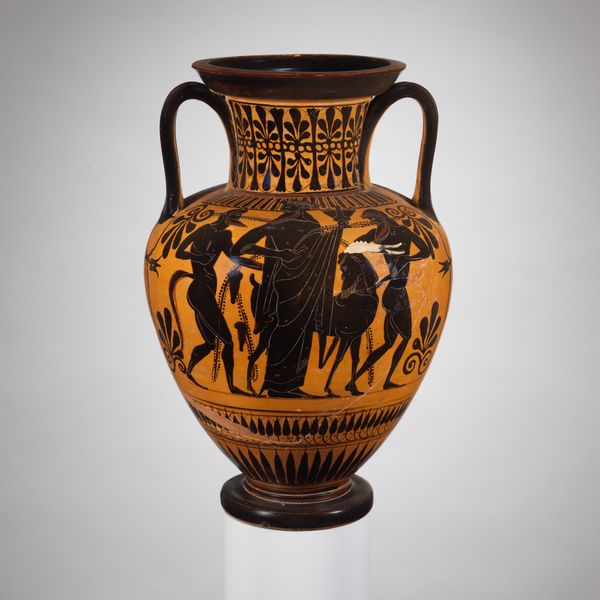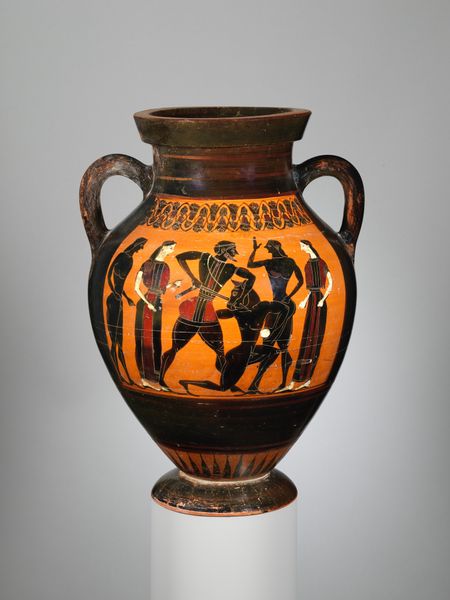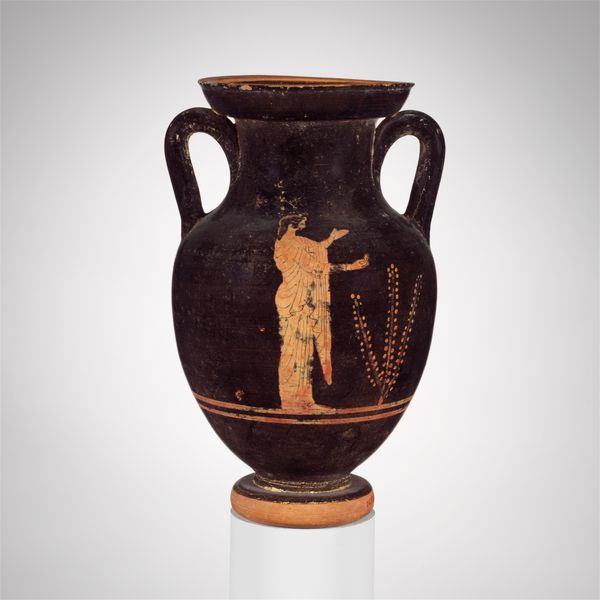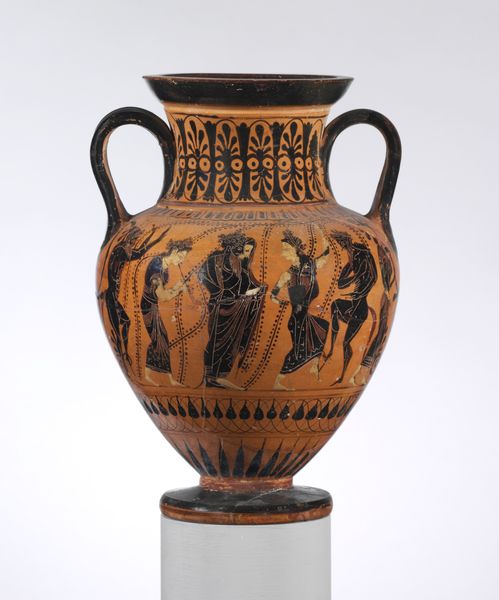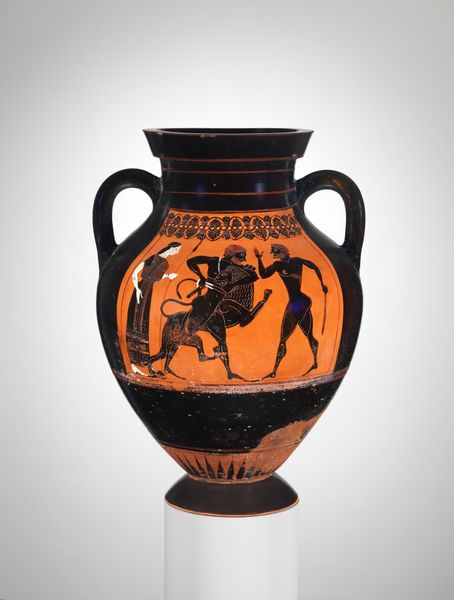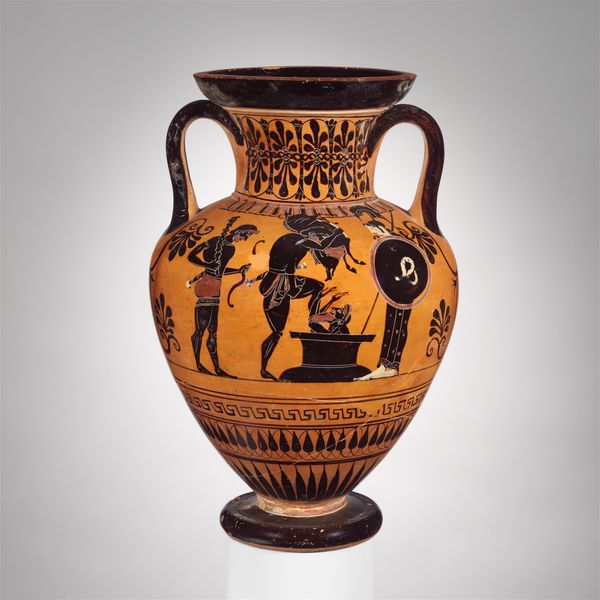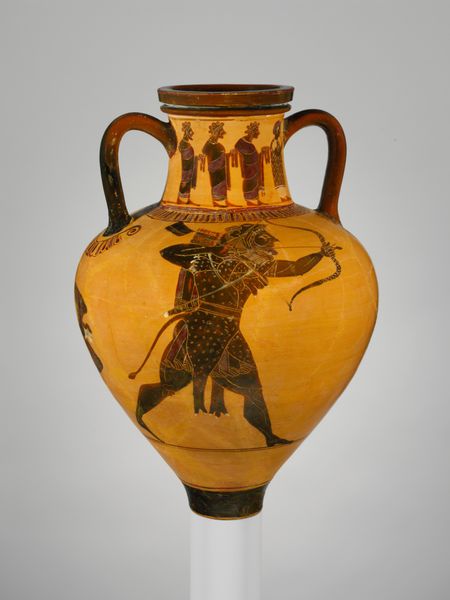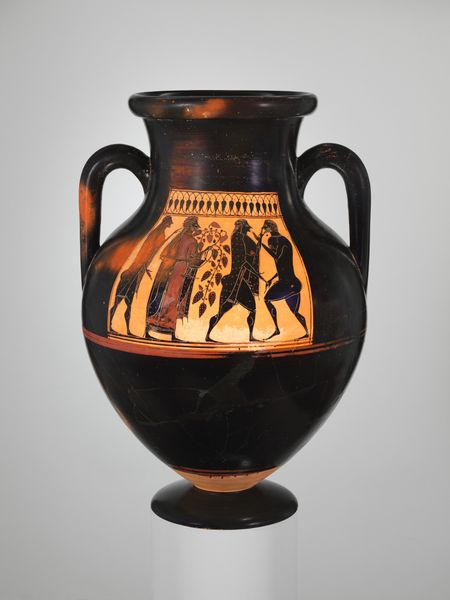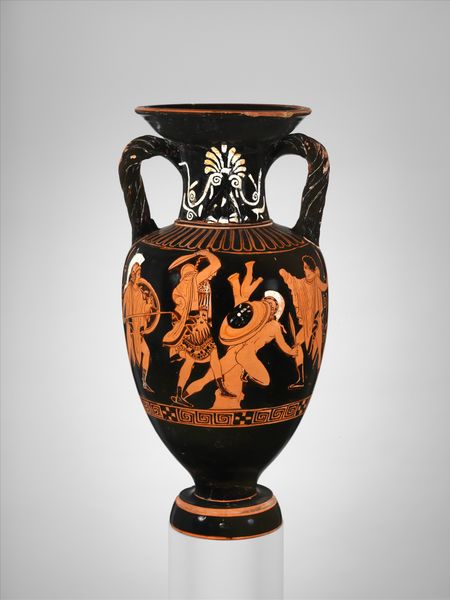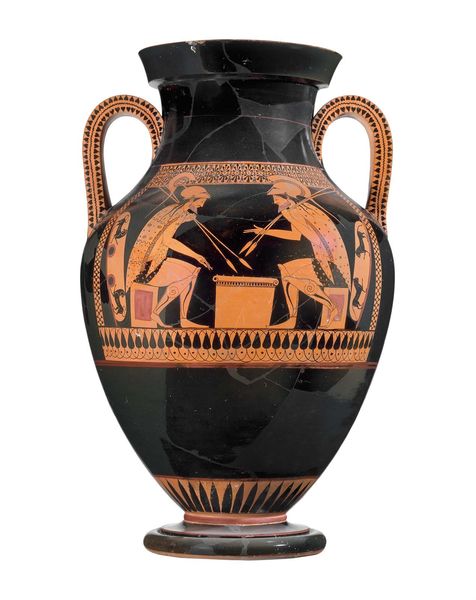
ceramic, earthenware
#
narrative-art
#
greek-and-roman-art
#
ceramic
#
figuration
#
earthenware
#
ancient-mediterranean
#
ceramic
#
earthenware
Dimensions: H. 11 5/8 in. (29.5 cm)
Copyright: Public Domain
Curator: Looking at this piece, what immediately strikes you? Editor: A feeling of controlled chaos. The figures are dynamic, almost violently active, yet contained within this elegantly shaped vessel. Curator: This is a terracotta amphora, a type of jar, crafted around 540 BC, currently housed at the Metropolitan Museum of Art. The artist is known as Taleides. What can you read from the iconography? Editor: Well, there’s a clear narrative unfolding here. We see figures interacting—a central male figure seems to be the focal point. Are they wrestling, perhaps? And the surrounding figures—mostly women—appear to be either observers or participants in some kind of ritual or spectacle. There's a distinct theatrical feel. Curator: Precisely. What's fascinating is how it offers a glimpse into the complex social and gender dynamics of ancient Greek society. The way male bodies are presented, particularly in moments of athletic contest or combat, served as powerful symbols of idealized masculinity, sharply contrasting with the draped and often passive female figures. Think about how these portrayals reinforce a specific cultural narrative regarding power. Editor: That tension between action and passivity is certainly there. Visually, the contrast between the black figures and the red background enhances the drama. Each line, each gesture is deliberate. Are the clothes the women are wearing representative of something else? The patterns, the way it’s falling. The vase really allows me to go back in time, and piece together what could be and what it might represent to different people involved. Curator: Consider how gender informs artistic representation even in the context of everyday objects. While pottery served functional roles in storage and transport, the scenes depicted contribute significantly to our understanding of the cultural performance surrounding gender, class, and even mythology. Editor: This vase makes the past feel a lot more personable, a little less lost. Curator: Absolutely. It reminds us that art serves as a tangible connection, sparking dialogues across eras. Editor: Agreed, I think that the vase has done a really beautiful job portraying this message.
Comments
No comments
Be the first to comment and join the conversation on the ultimate creative platform.
